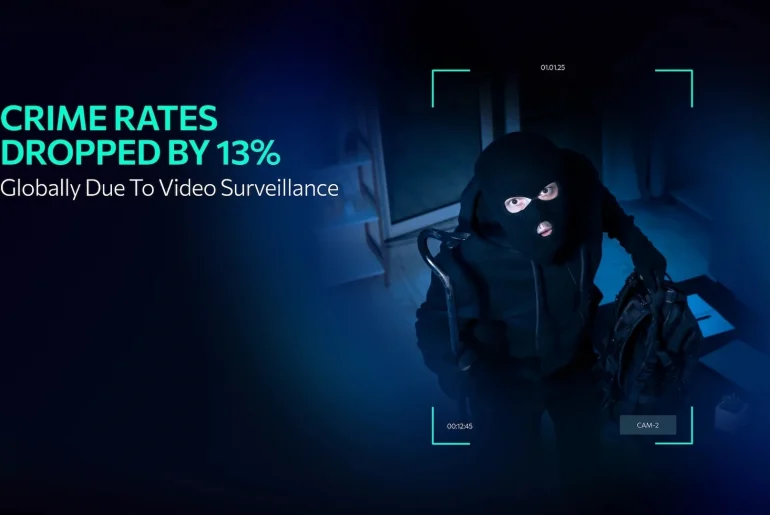What 40 Years of Research Tells Us About Video Surveillance and Public Safety
Video surveillance has become one of the most global adopted solution aimed at crime prevention and public safety. For decades, it was a revolution from a specific security tooVideo security surveillance has become one of the most global adopted solutions aimed at crime prevention and public safety. For decades, it was a revolution from a specific security tool to the most widespread solution with significant implications for law enforcement, businesses, and governments. At Aipix, we performed a huge research based on most-known world practices on how public cameras and then cloud video surveillance as a service influences public safety globally. We are glad to share our valuable insights with our partners and clients.
Get all insights of global research to get to know the impact of video cameras in offense prevention and use it to make video monitoring services even more widespread.
The Growing Global Adoption of Video Systems
The global adoption of video surveillance has been started from the B2B and B2G needs. Governments worldwide use video cameras in crime prevention, public safety, and control urban spaces. Simultaneously, businesses got video monitoring for purposes ranging from theft prevention, business security to operational efficiency.
In North America, Europe, and East Asia the way in adopting video surveillance and detection ai to prevent crime was more intense, in Latin America and the MENA region rapidly catching up. This adoption proved surveillance and remote security as a cost-effective and effective solution in public safety and the quality of life, making urban areas safer for inhabitants.
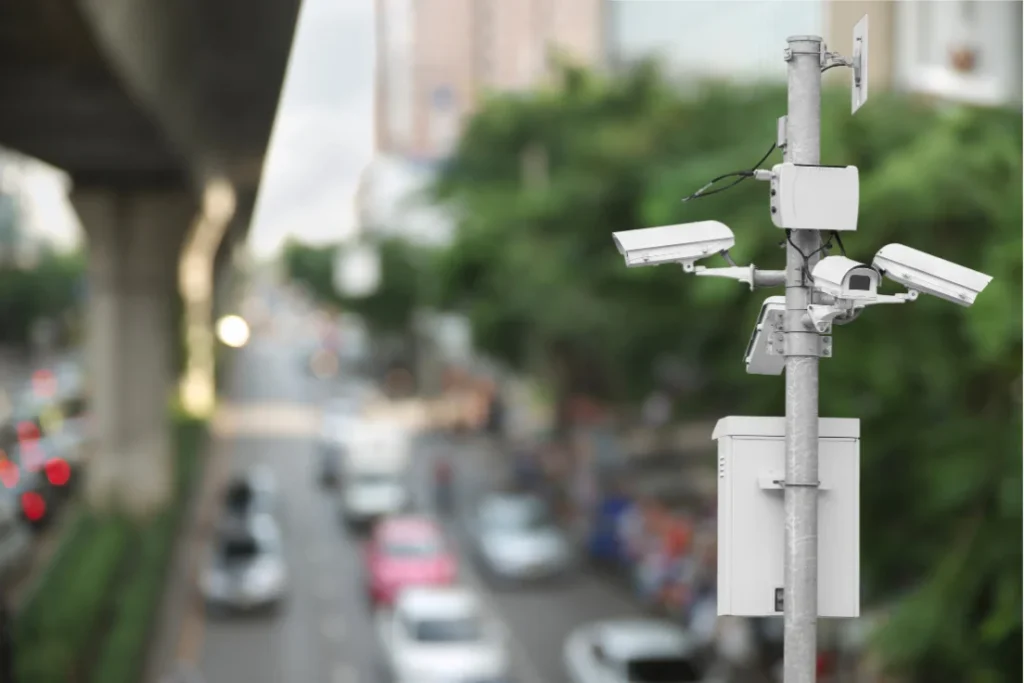
Historical and Modern Data of Video Surveillance Systems on Crime Reduction
Video surveillance has undergone a transformative journey. From rudimentary closed-circuit television (CCTV) in the mid-20th century to the sophisticated AI-driven platforms of today, this technology has changed the needs of public safety. Early analog systems offered basic visual monitoring but lacked live response capabilities. The transition to digital video recording (DVR) in the 1990s enabled better storage, retrieval, and analysis, while advancements in network-based systems introduced remote accessibility and scalability.
Today, surveillance systems are the cornerstone of modern security strategies, driven by innovations such as high-definition (HD) cameras, video surveillance as a service (VSaaS), intelligent video analytics, remote video, facial recognition, and integration video monitoring with the Internet of Things. These advanced monitoring services have expanded the capabilities of security systems, making them essential tools for law enforcement and public safety initiatives.
Early Adoption and Initial Studies of Surveillance Solutions
The first major goal to deter crime with video for public safety emerged in the 1960s. The Effectiveness of Security Camera on crime reduction was limited. The analog technology had a low image quality and no real-time monitoring. The lack of automation needed monitoring centers with skilled security personnel to live monitor footage, making it a resource-intensive solution.
In the late 1970s and early 1980s, several UK cities experimented with video crime monitoring in public spaces showing a reduction trend in violation, particularly in locations with a visible camera presence.
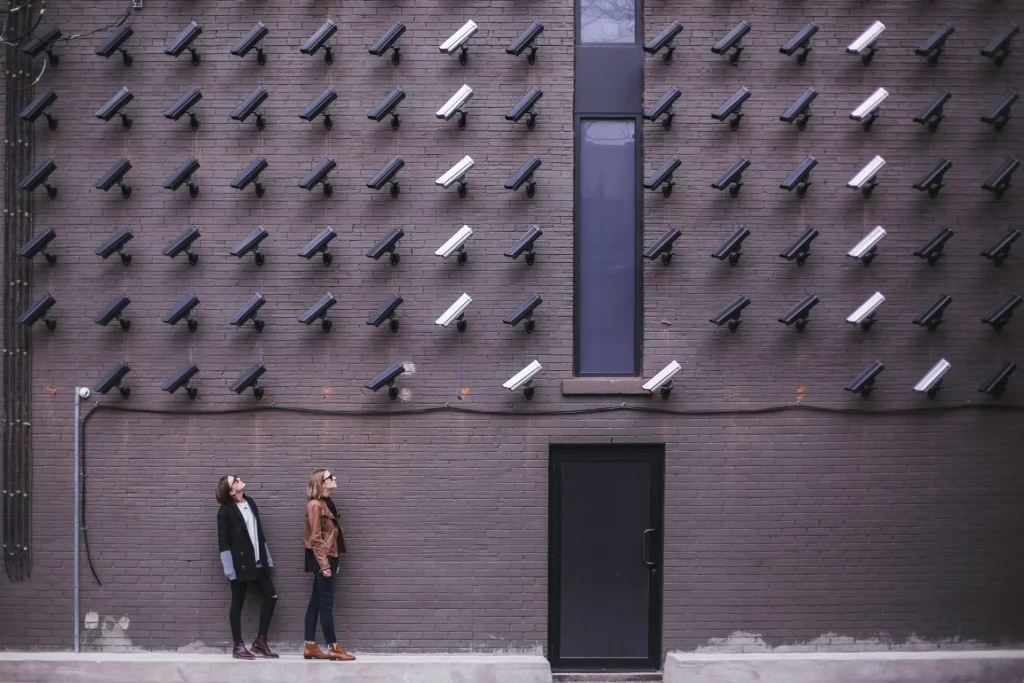
Key Case Studies of Historical Impact
- The UK Experiment (1980s)
One of the earliest cctv crime prevention effectiveness research was conducted in the 1980s in the UK. CCTV systems were installed in a range of public locations. They highlighted street wrongdoing reduction, but also a trend for offense to move to areas not covered by surveillance. In some areas with visible video monitoring cameras (even false), violation rates dropped by 30-40%. - The 1990s: Risk Reduction in Parking Lots
In the 1990s, the security camera studies of parking lots, where theft, unauthorized access and vandalism were prevalent, began to show positive results. For example, research on video cameras in crime prevention in parking facilities security in the US and UK indicated a 50% reduction in theft-related crimes. The presence of cameras created a deterrent effect, particularly in isolated or poorly lit areas.
Modern Impact of Video Surveillance on Crime Reduction
The late 1990s and early 2000s was the period of digital surveillance systems invention. Security monitoring offered better image quality, remote monitoring, efficient data storage, motion detection, facial recognition, and automatic incident alerts, making it easier for law representatives to real-time monitoring and quickly respond to potential offense action.
Later smart video monitoring for public safety became integrated with other security systems, such as alarm systems, access control, public alert systems, and archive video. Modern VAS (or VSaaS) solutions cover all digital public security needs in cities and government facilities, from cloud-managed surveillance to evidence storage.
Key Modern Case Studies of Video Surveillance Impact
- Stockholm Subway System (2006-2008)
Stockholm installed public video surveillance cameras in subways to address rising criminal rates. A study by Mikael Priks (2015) found that the introduction of CCTV led to a 25% reduction in overall criminal activity rates in central stations. However, the wrongdoings moved to areas without surveillance. This highlighted the need for a strategic and well-distributed placement of cameras to avoid offense displacement. - Los Angeles (2008)
A study by Aundreia Cameron et al. (2008) found mixed results, with some areas experiencing up to a 10-15% reduction in crime, while others showed no noticeable change. Such results were caused by factors such as camera placement, live monitoring practices, and the involvement of local law enforcement in responding to alerts. - Washington, D.C. (2011)
A Washington, D.C. study examined the effectiveness of various surveillance camera types on violation reduction. On average, it decreased by 10-20% in areas with high-quality cameras and active monitoring security, compared to areas without them.
Public Video Systematic Reviews and Meta-Analyses
Several systematic meta-analyses summarize the trends from a wide range of global studies. They offer deeper research on how CCTV impacts crime reduction and highlight key factors affecting effectiveness:
- Welsh and Farrington (2009)
A review of 22 studies found that CCTV had a significant offense reduction effect, especially in reducing vehicle-related offenses in parking and public spaces. Some areas reported wrongdoing reductions of up to 25%. - Piza et al. (2019)
Extensive 40-year systematic review provided comprehensive data of the long-term impact of CCTV on crime prevention. The results showed that CCTV systems generally lead to strong wrongdoing reductions, but its success varies by offense type, location, and implementation strategy. The review highlighted that combining Surveillance Cameras in Public Spaces with other measures of community policing produced better outcomes. The overall average violation reduction was approximately 13%.
Key Insights from Modern Video monitoring Studies
While Cameras Deter Crime in the aims of public safety, studies emphasize considering other factors when addressing offense as a social issue. And they can often slow down the significant results achieved after camera system implementation.
- Contextual Factors Matter
The effectiveness of video surveillance is not uniform across all regions or types. Socioeconomic, local law, and violation type significantly influence the effectiveness of CCTV systems. - Surveillance Crime with Other Security Measures
The most successful video control systems are those that are integrated with other security measures:
- real-time monitoring,
- public safety initiatives,
- Artificial intelligence-powered predictive analytics.
A UK Home Office Study (2008) showed areas combining CCTV, better lighting, patrols, and community involvement reduced offense by 35%.
- Violation Displacement
While video surveillance can reduce crime in monitored areas, it may lead to criminal activity migrating to sites without surveillance. A UK study in 2012 found that crime rates dropped by 17-24% in surveillance-covered zones. The surrounding areas without cameras saw an increase in offense by up to 15%.
All these factors need the considerations in combination when searching a joint strategy for the effective implementation of camera security.
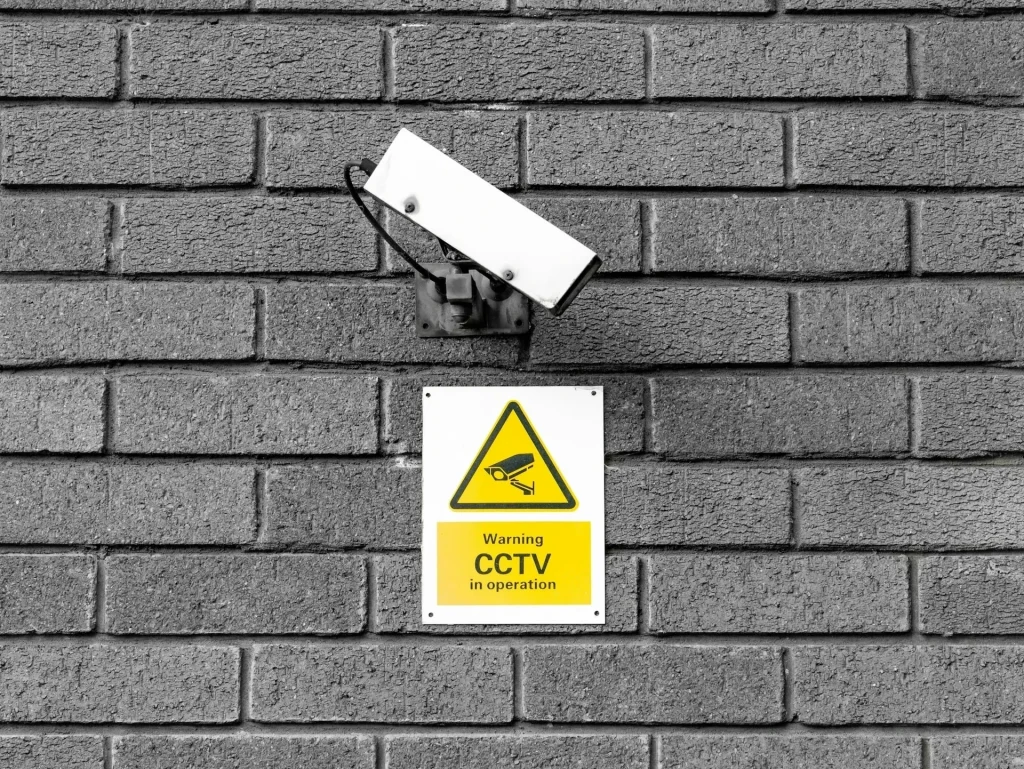
Regional Differences in Video Surveillance in Theft Prevention Outcomes: Comparing Progressive and Depressive Regions
The impact of video surveillance on crime reduction varies greatly between regions with differing infrastructure levels. Advanced regions with robust infrastructure often experience greater benefits compared to areas with limited resources. These disparities arise from differences in technological adoption, socioeconomic conditions, and access to supportive resources like law enforcement. Community engagement also plays a critical role in determining the effectiveness of surveillance. This section provides insights into how these factors shape the success of security initiatives.
Progressive Regions with Advanced Video Monitoring Services Infrastructure
Progressive regions typically have well-developed technological, economic, and social frameworks that support surveillance burglary prevention. As a result, the impact of video crime monitoring in these regions tends to be more significant.
Key Characteristics of Progressive Regions:
- Advanced Technological Infrastructure. High-speed internet and live access to smart devices allow the deployment of advanced surveillance technologies like AI-powered cameras, facial recognition, and predictive analytics.
- Robust Law Enforcement and Monitoring Systems. Well-funded police departments and guards with advanced equipment for real-time monitoring for a quicker response.
- High Public Awareness of the citizens, who are often more familiar with surveillance technologies and supportive of their use, contributing to a better public trust and cooperation.
Case Study
London, UK (Progressive Region)
London is an example of advanced infrastructure of CCTV crime prevention that has contributed to the success of video surveillance. With the highest CCTV concentration in the world (1.85 million cameras) monitoring public and private spaces the criminal activity decrease was by 30-40%, particularly in relation to theft and property violation.
Statistical Insight from London Security:
- 30-40% reduction in theft and property violation in high-density, camera-monitored areas.
- Increased detectability of criminal activities. With a 15-20% higher rate of violation solved through video evidence in areas with extensive surveillance (including false).
Video Surveillance for Crime Reduction: Depressive Regions with Limited Resources
Latin America often faces challenges like limited resources, economic inequality, and high violation rates. Assessing the impact of video surveillance in these areas is difficult due to security camera infrastructure limitations and inadequate safety systems. However, countries like Brazil have made progress in implementing video cameras, with success varying based on local conditions.
Key Characteristics of Depressive Regions in Latin America:
- Limited Technological Resources in LATAM with difficult access to high-speed internet, advanced camera technologies, and smart city security infrastructure. The lack of technological resources impacts the quality and effectiveness of CCTV.
- High Crime Rates particularly in urban centers, where gang violence, theft, and drug-related violations are prevalent.
- Underfunded Public Safety Programs when law enforcement in several Latin American regions is often overwhelmed, under-resourced, and poorly equipped to monitor the large volumes of footage generated by surveillance systems.
- Socioeconomic challenges, such as economic disparity, low education levels, and insufficient community investment, create an environment where offensen fuels social instability.

Case Study
São Paulo, Brazil (Depressive Region in Latin America)
São Paulo, one of the largest cities in Brazil and Latin America, offers relevant case study of video surveillance security in depressive regions.
Key Findings:
- São Paulo has implemented a surveillance system in several risky areas, including public transportation hubs, shopping centers, and key commercial zones with 10,000 CCTVs.
- Deploying CCTV in areas like shopping malls, bus terminals, and main streets has reduced theft and vandalism. However, the effect on homicides and gang-related violence, has been negligible. Local studies show a 15-20% reduction in property offense in monitored areas, with no significant impact on wrongdoings.
Challenges Identified:
- Inadequate Monitoring and Response Capacity.
A primary challenge in São Paulo’s Security is the shortage of law enforcement personnel to monitor camera feeds. Only a small percentage of footage is actively reviewed. And police often cannot respond in real time, especially in risky areas.
- Resource Constraints
Limited financial resources have hindered the city’s ability to upgrade or maintain the surveillance system. Some older cameras have become obsolete, and the integration with other wrongdoing-fighting technologies, such as predictive policing tools, remains insufficient.
- Displacement of Offense
Video surveillance technology in São Paulo has caused some crime displacement to areas with fewer cameras, especially marginalized districts.
Statistical Insight from São Paulo:
- 15-20% reduction in property violations (e.g., theft and vandalism) in high-density, camera-monitored sites.
- No significant impact on violation rates, such as homicides or gang-related violence
- Violation displacement: 10-15% increase in offense in surrounding areas with limited or no surveillance coverage.
- 60-70% of surveillance live video and footage goes unmonitored due to limited security guards for video content analysis and technical capacity.
Case Study
Rio de Janeiro, Brazil (Another Depressive Region in Latin America)
Rio de Janeiro faces similar challenges with camera security. In recent years, the city has launched several high-profile surveillance projects aimed to combat rising violations, especially in favelas and tourist-heavy areas.
Key Findings:
- Rio de Janeiro has placed a considerable number of cameras in areas frequented by tourists, such as Copacabana Beach, downtown, and public transportation routes. Additionally, some favela communities have received surveillance, though coverage remains limited.
- Mixed Impact on Crime Reduction. Though in the tourist areas, CCTV has shown some success in reducing violations like theft, robbery, and pickpocketing.
- Challenges in Implementation. Installing surveillance systems in the favelas has been challenging due to rugged terrain, lack of infrastructure, guards and gang control. Many residents also distrust surveillance, viewing it as government control rather than a security solution.
Statistical Insight from Rio de Janeiro:
- 10-15% reduction in petty wrongdoings (e.g., theft, pickpocketing) in monitored tourist areas.
- No significant reduction in violent offense (e.g., homicides, drug trafficking) in favelas, where CCTV is less effective.
- Low engagement from the local community in favela areas, contributing to resistance to surveillance systems.
- 30-40% of cameras in favela areas are non-functional or poorly maintained due to lack of resources and technical issues.
Video Monitoring Challenges in Latin America and Lessons Learned
The experiences in São Paulo and Rio de Janeiro highlight critical challenges faced by depressive regions in Latin America in effectively using video surveillance for violation prevention:
- Limited Resources for Surveillance Monitoring Maintenance
Many regions lack the funding required to maintain and upgrade CCTV systems and security camera monitoring processes, leading to outdated equipment, ineffective surveillance, lack of maintenance and technical support.
- Displacement of Violation
Criminals may simply relocate their activities to areas outside the reach of surveillance systems, rendering the cameras less effective in areas with insufficient coverage.
- Community Distrust and Engagement
There is often a lack of trust in security services authorities and surveillance, which can limit cooperation with public security efforts. In some instances, people who live there view surveillance as a form of social control rather than a tool for crime prevention.
- Understaffed Law Enforcement
Even in cities with a relatively high concentration of surveillance cameras, law agencies often struggle to monitor and respond in real-time.
Video surveillance in LATAM, particularly in São Paulo and Rio de Janeiro, demonstrates that while CCTV reduces certain types of offense, its effectiveness is often a compromise of resource constraints, underfunded law enforcement agencies, and the displacement of violation.
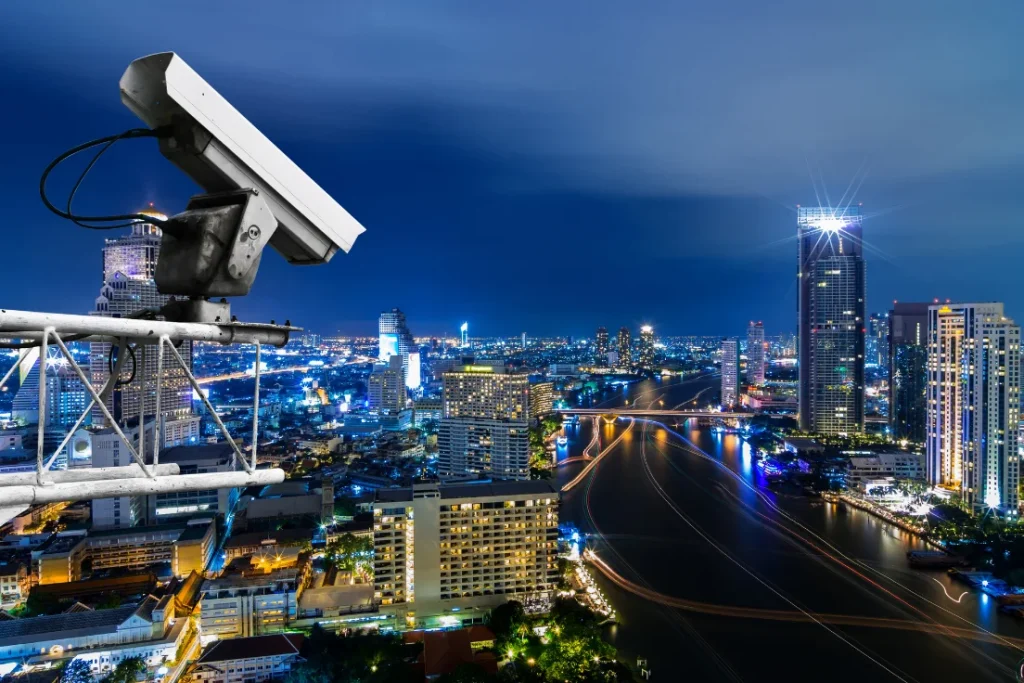
Further Advancements in Video Surveillance for Crime Reduction
Video surveillance is not merely a tool for public safety but a foundational element of the smart city infrastructure. Its integration with advanced technologies like remote video, detection ai, IoT, virtual storage, and big data analytics helps cities become more responsive, efficient, and secure. As the world moves towards smarter urban environments, smart video monitoring for public safety will continue to evolve, playing an integral role in shaping the future cities.
Strategies and Best Practices for Future Implementations of VSaaS for Crime Reduction in B2B and B2G
As remote surveillance technology evolves, businesses and governments must search strategic approaches to ensure these systems contribute effectively and sustainably to public safety. Implementing these systems in B2B and B2G requires careful consideration of factors from technology integration to operational efficiency, security and compliance with legal and ethical standards. The following outlines proposed strategies and best practices to guide future monitoring services implementations.
Clear Objectives and Stakeholder Alignment
The first step in successful video surveillance implementation is to define clear and measurable objectives. Whether the goal is crime reduction, improved traffic management, enhanced security during public events, or streamlined operations, it is aligning all relevant stakeholders, including law agencies, governments, private partners, and technology providers, around these shared objectives. In both B2B and B2G agents, local authorities may require surveillance systems to reduce public disturbances, while private companies may focus more on operational efficiency and cost-effectiveness.
Integrate Video Surveillance with Broader Smart City and IoT Infrastructure
To fully realize the benefits of video surveillance, it must be integrated with other elements of smart city infrastructure for creating a live video, seamless and efficient urban security ecosystem. Furthermore, leveraging the Internet of Things (IoT) for data sharing can enhance these systems, allowing surveillance cameras to work in tandem with other smart sensors and devices.
Implement Advanced Data Analytics and AI for Predictive Insights
Incorporating artificial intelligence (AI) and machine learning into video surveillance systems can automate processes like violation pattern recognition, facial recognition, and vehicle license plate identification, analyze large volumes of data in real-time, detecting abnormal behavior and reducing response times. Predictive analytics combined with VAS (or VSaaS) can further augment the system’s utility by forecasting potential offense hotspots or emergencies based on historical data, detection ai, trends, and real-time information.
Focus on Privacy
Legal and ethical considerations are paramount when deploying video surveillance systems. Compliance with data privacy regulations such as the General Data Protection Regulation (GDPR) in Europe and other laws is essential for protecting individuals’ rights. Implementing Privacy-Enhancing Technologies (PETs) like data anonymization, encryption, and pseudonymization can further safeguard the identity and personal information of individuals captured by surveillance cameras. Regular data protection impact assessments (DPIAs) will help identify and mitigate risks associated with the collection and use of surveillance data. Additionally, it is also vital for video surveillance companies to maintain transparency with the public by informing them about the presence of surveillance cameras, their purpose, and the safeguards in place to protect privacy.
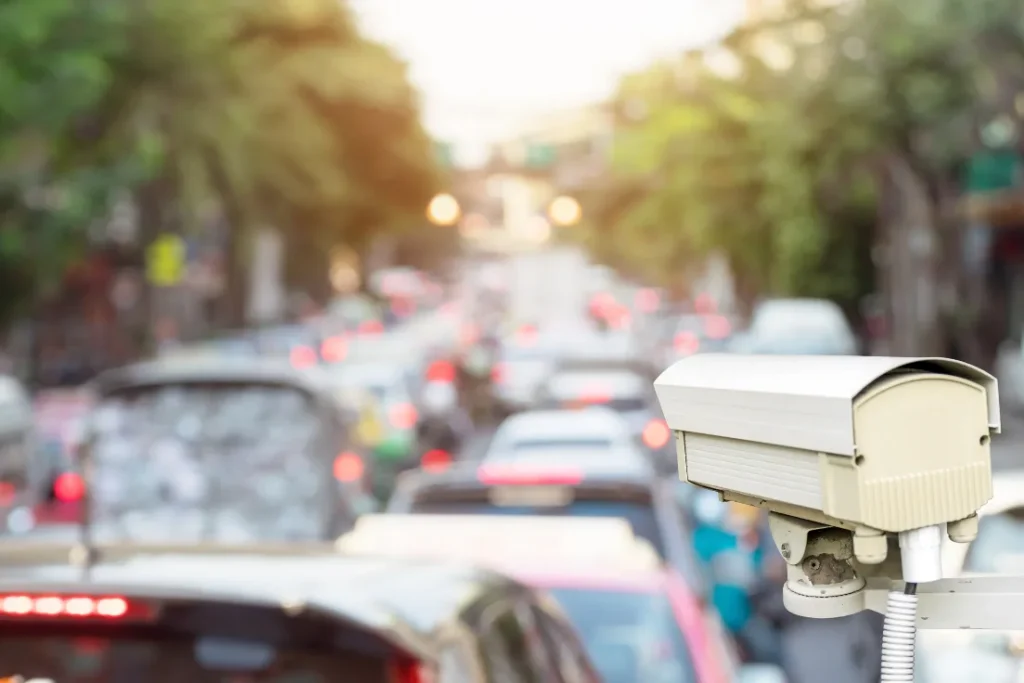
Scalable and Future-Proof Infrastructure
Video surveillance systems should be designed with scalability in mind, enabling them to grow alongside urban expansion and technological advancements. Cloud-based platforms providing a variety of VAS AI solutions are particularly beneficial as they provide flexibility, cost-effectiveness, and scalability. These video monitoring platforms allow for easy access to historical footage, motion detection and real-time data analysis for situational awareness. Choosing modular, scalable camera systems that can be upgraded ensures long-term sustainability, reducing costly overhauls.
Implement Proactive Maintenance and Continuous Monitoring
Regular maintenance is critical to ensuring that video surveillance systems continue to operate at their highest potential. IoT sensors can improve maintenance efficiency by detecting camera or infrastructure malfunctions before they cause system failures. Setting up automated incident reporting tools will ensure that relevant personnel are alerted whenever suspicious activity is detected. Routine performance reviews and audits help assess the system’s effectiveness and ensure it meets public safety objectives while using cameras for crime reduction goals.
Public Engagement and Transparency
Public engagement is crucial. Transparency in data usage and surveillance practices can build public trust. Creating online dashboards or portals with anonymized data on video surveillance’s role in crime prevention promotes transparency and accountability.
Prioritize Collaboration and Public-Private Partnerships (PPPs) in usage of video surveillance for crime reduction
Developing video surveillance systems in B2B and B2G requires collaboration between government agencies, private companies, surveillance companies and technology providers. Public-private partnerships allow for pooling resources, knowledge, and expertise, ensuring more effective and sustainable video security implementations in addressing local challenges.
Interested in learning more about our team expertise and capabilities in live security? Contact us for a consultation to explore your needs and create a transformative solution.
Get your "Historical and Modern Impact of Video Surveillance on Crime Reduction"
Leave your e-mail and we’ll send you the file

